Best Online Pitch Recognition Hitting Drills Website Game App For Baseball & Softball | Tips To See Ball And Pitch Better, Fix Late Swing Timing, & Help Batter Struggling To Hit
Discover the best online pitch recognition hitting drills website game app for baseball and softball players. Tips to see the ball and pitch better, fix late swing timing, and help your batter that may be struggling to hit.
Get Rid of Pitch Recognition, Plate Discipline, & Timing Challenges Once and For All
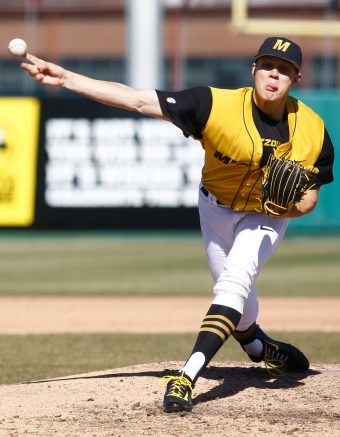
Photo courtesy: News.Missouri.Edu
In this post,
I answer the following three fan questions:
- How do you practice picking up the pitch early?
- Do you have players swing at everything during batting practice or let them be selective? What drills are good for teaching a player to hit a ball where it is pitched? And,
- Why is Timing not taught throughout majority instructors? Great mechanics are good but without Timing principles, you just look good going back to the dugout. What are some of the different ways you would teach/describe Timing?
The following is a compilation of resources I wish I had when I was still playing.
Coaches, if you aren’t taking full advantage of these, then you’ll be slowly losing ground in games over the next 5 years, that I can assure you. Get out ahead!
Onward…
How do you practice picking up the pitch early?
Check out the feedback software you can use to work on getting GREAT at pitch recognition. Dr. Peter Fadde calls this ‘video occlusion’, which allows a hitter to focus on pattern recognition for the first 10-20 feet of ball flight. CLICK HERE for a blog interview I did with Dr. Fadde for more information on the benefits of his ‘video occlusion’ training.
The greatest thing about the GameSense software, is that coaches can keep track of their players’ use of the software with real numbers. What’s measurable is manageable.
As a player, I would’ve eaten this up when I was younger.
And yes, it requires a subscription, and the pricing plans differ depending on usage. On the homepage, GameSense is offering a free trial, so you can check it out and see if it’s right for you.
CLICK HERE to grab your FREE trial of the GameSense app that focuses on pitch recognition training…i.e. picking the ball up early out of the pitcher’s hand.
By the ways, gS Pitch-IQ was named one of the best products at the 2017 ABCA convention in Anaheim!
Do you have players swing at everything during batting practice or let them be selective? What drills are good for teaching a player to hit a ball where it is pitched?
I’m not sure I’d ever let hitters swing at everything during batting practice. Everything we do at practice, as coaches, MUST have a purpose. And that purpose MUST prepare our players for the game environment.
CLICK HERE to watch YouTuber Trevor Ragan compare the benefits of training “ugly” in a post I did showing how to EFFECTIVELY transition grooved batting practice swings into game ones.
Here’s why swinging at everything in the cages DOES NOT translate into games…motor skill learning in a competitive environment MUST follow these three steps:
- READ – i.e. pitch recognition and spin
- PLAN – i.e. timing
- DO – the swing
You see, when a hitter swings at everything in the cages, most of what they’re working on is in the “DO” portion. There’s very little READ or PLAN present, which is required in a game environment.
“Massed Training”, as defined by SchoolOfThinking.org, is said to be a far less effective strategy for retaining knowledge or developing skills. In other words, practicing the same thing over and over again WITHOUT a break and evaluation period is inferior to spaced and/or ugly training. CLICK HERE for my Hitting Outcomes Evaluation Checklist.
So what does being selective in the cages look like:
- After every 5-swing round, the hitter is asked, “How many strikes did you swing at?” (and they’re affirmed or corrected based on their answer)
- You can also do what I call is a Reverse Strike-Zone round. This is where they MUST swing at “balls” – within reason, you don’t want them throwing their bat in the cage – and taking “strikes”. WHY would you do this? It helps define a hitters strike-zone/hitting zone, and offers a better variety of body movement which the body’s springy fascia LOVES!! This will melt their brain by the way 😛 lol
- CLICK HERE for this post I did on plate discipline – splitting the plate up into 2/3’s and 1/3 is another great way to teach your hitters to be more selective.
- This answers the second part to the reader question above…you can also turn on READ, PLAN, DO by limiting what parts of the field you want the hitter to hit to, OR limit certain elevations you want the hitter to hit at, regardless of pitch type, location, and speed. Addressing the former…you can setup targets out in the field preferably in spots where you don’t find any fielders (gaps/down the lines), and hitter has to hit the target as hard as they can. Addressing the latter…I’ve seen some coaches place shagging screens about 30 to 50-feet from the batter’s box creating a barrier to hitting ground-balls, and the objective is to hit the ball hard over the screens.
- Random pitch type rounds – an example of this is randomly throwing either a 2-seam fast-ball or a curve-ball, and having the hitter stick to seeking out one pitch over the other for one 5-swing round.
- 2 or 3-plate drill rounds – where the hitter moves from different plate distances between or during 5 swing rounds. The plates can be placed about 3 to 5 feet apart. This is a GREAT timing drill.
- Doing situational hitting rounds…hit-and-runs, move runner over, and bunts/drags/pushes.
I’m sure other coaches have cool deviations of the above, so please SHARE in the comments section below.
The point is, hitters should have a purpose when taking batting practice, NOT just swinging at everything, IF they want to match the game environment.
Why is Timing not taught throughout majority instructors? Great mechanics are good but without Timing principles, you just look good going back to the dugout. What are some of the different ways you would teach/describe Timing?
Totally. I tell my hitters that the most effective mechanics in the world don’t mean a thing if they can’t get on-time.
Surprisingly, some hitting instructors don’t think timing can be taught? I disagree.
Now, let me clear up a common misconception…do you know the difference between timing and reaction time?
I got the following demonstration from my good friend Taylor Gardner, co-inventor of the Backspin Tee. Do this with your hitters…
Tell them to stand in front of you, and hold a baseball/softball an arm’s length away from you at about the height of their head.
Then tell them you’re going to drop the ball at a random time…try varying the times you drop the ball, and you’ll find it’ll be a challenge for them to catch it. Repeat two more times. This my friend is a demonstration of reaction time.
Then tell them you’re going to drop the ball after counting to 3 (no tricks here coaches)…count to three, then drop the ball. Repeat two more times. This my friend is a demonstration of timing. And as you may guess, this will be much easier to catch for your players.
Timing can be taught with the right methods. Here are my top three:
- The TWO or THREE plate drill mentioned above,
- Switching bat sizes and weights between or in the middle of 5-swing rounds, and
- Switching ball types at random…using baseballs, softballs, whiffles, golf whiffles, racket balls, Smush balls, and tennis balls.
Thank you Mike Ryan from Fastball USA for the last two. A hitter will have to re-calibrate their timing between swinging a longer heavier bat than a lighter shorter one. The different balls mentioned will fly through the air at different speeds making for a perfect off speed practice environment. This can be really challenging for the hitter, and a lot of fun.
But be careful coaches, slowly layer in the difficulty, don’t do ALL three above at the start. Some hitters excel quickly, while others take more time.
Do you see how important training beneath the READ, PLAN, & DO umbrella is?
I hope this helps coaches!!
Please share any other effective methods you do with your hitters that improve what was talked about above. THANKS in advance!
- Best Youth Baseball Hitting Program to Boost Rotational Power Fast—Trusted by MLB’s Rajai Davis & Built on the Catapult Loading System - June 22, 2025
- The #1 Arm Care Program for Youth Baseball: Why Top Travel Coaches Trust Jaeger’s J-Bands & Long Toss Routine to Prevent Injury Fast - June 3, 2025
- Are Baseball Hitting Lessons Worth It in 2025? Fix Your Kid’s Swing Fast With Pro-Approved Drills (Before You Waste Another $60) - May 29, 2025



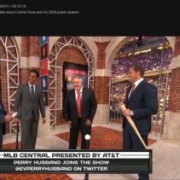
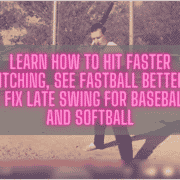
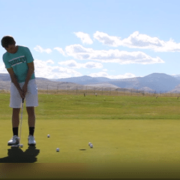

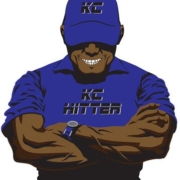

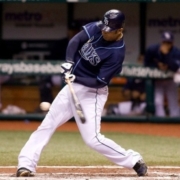



Leave a Reply
Want to join the discussion?Feel free to contribute!